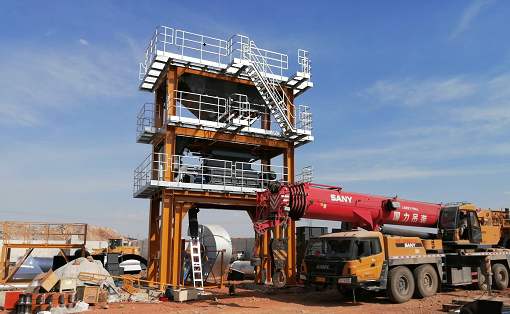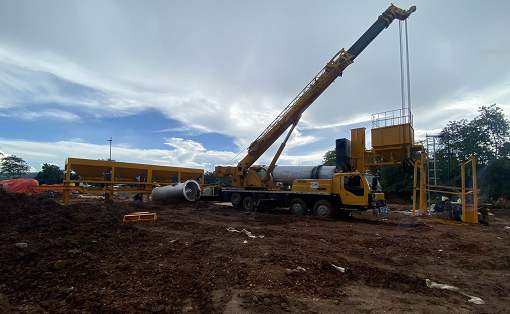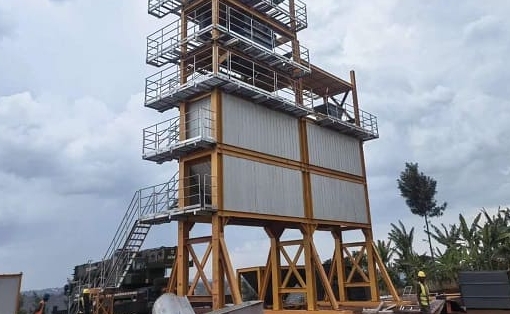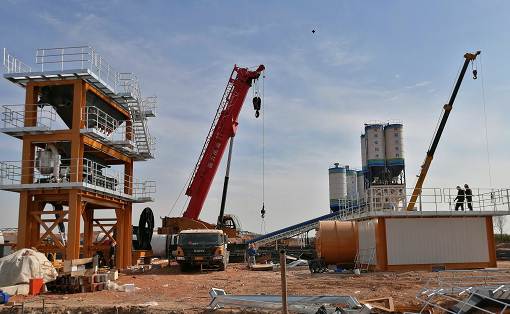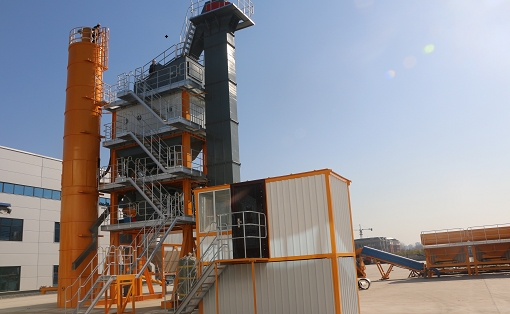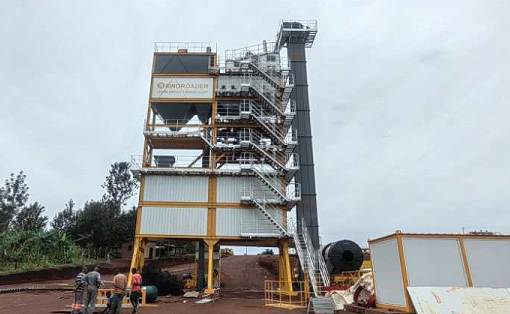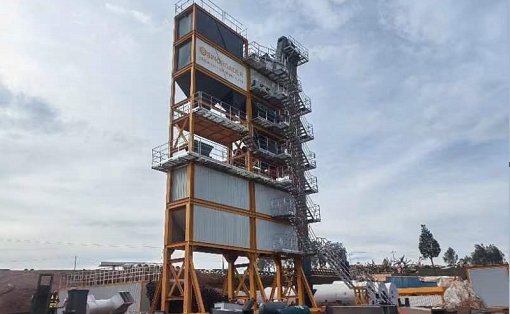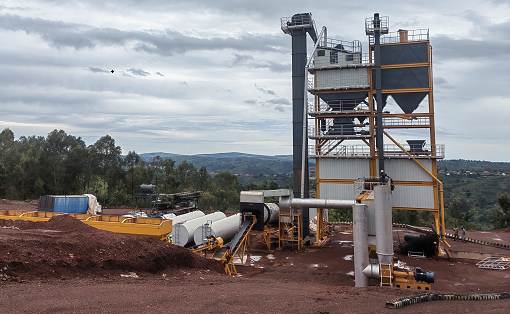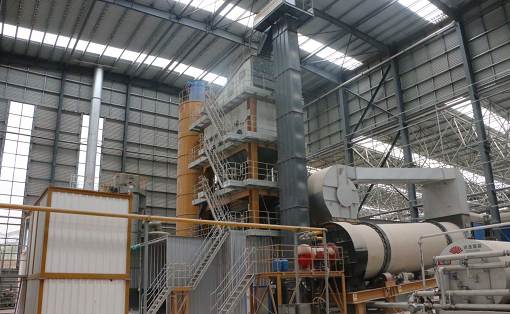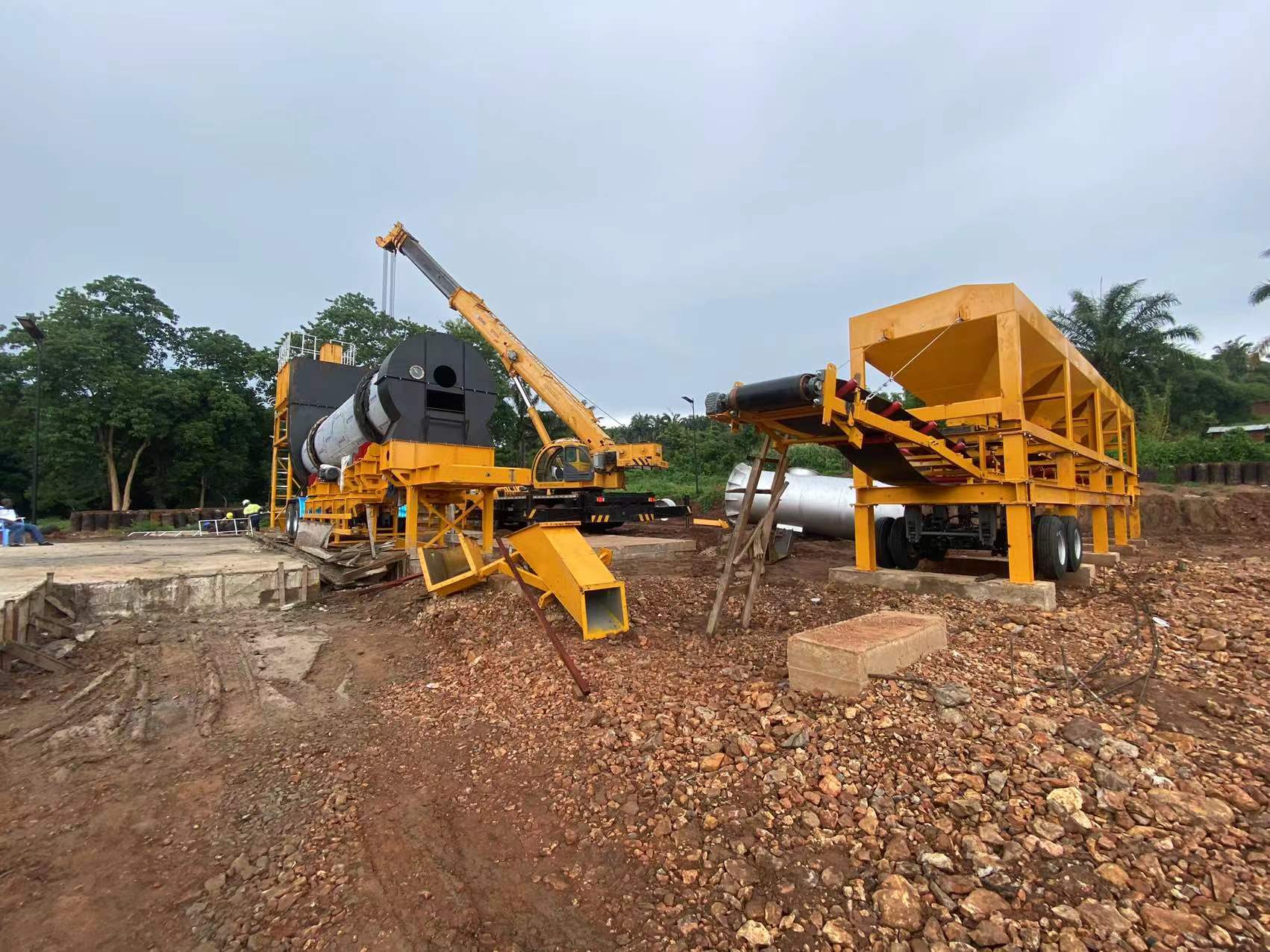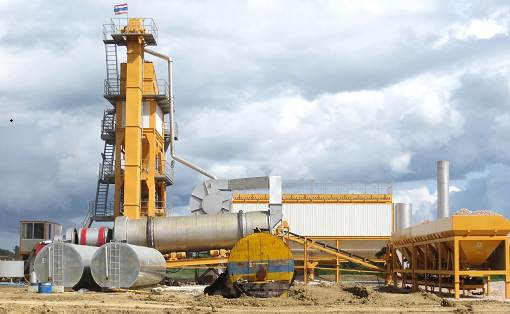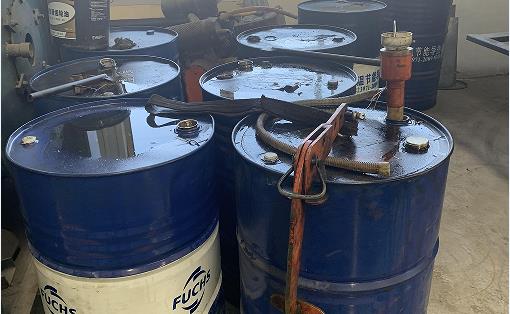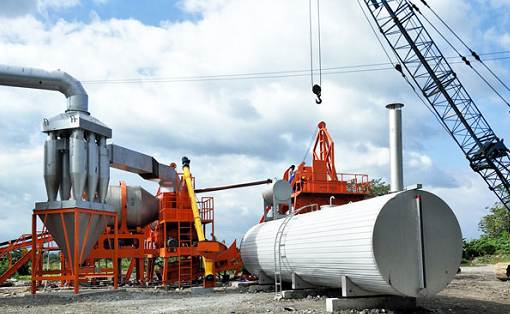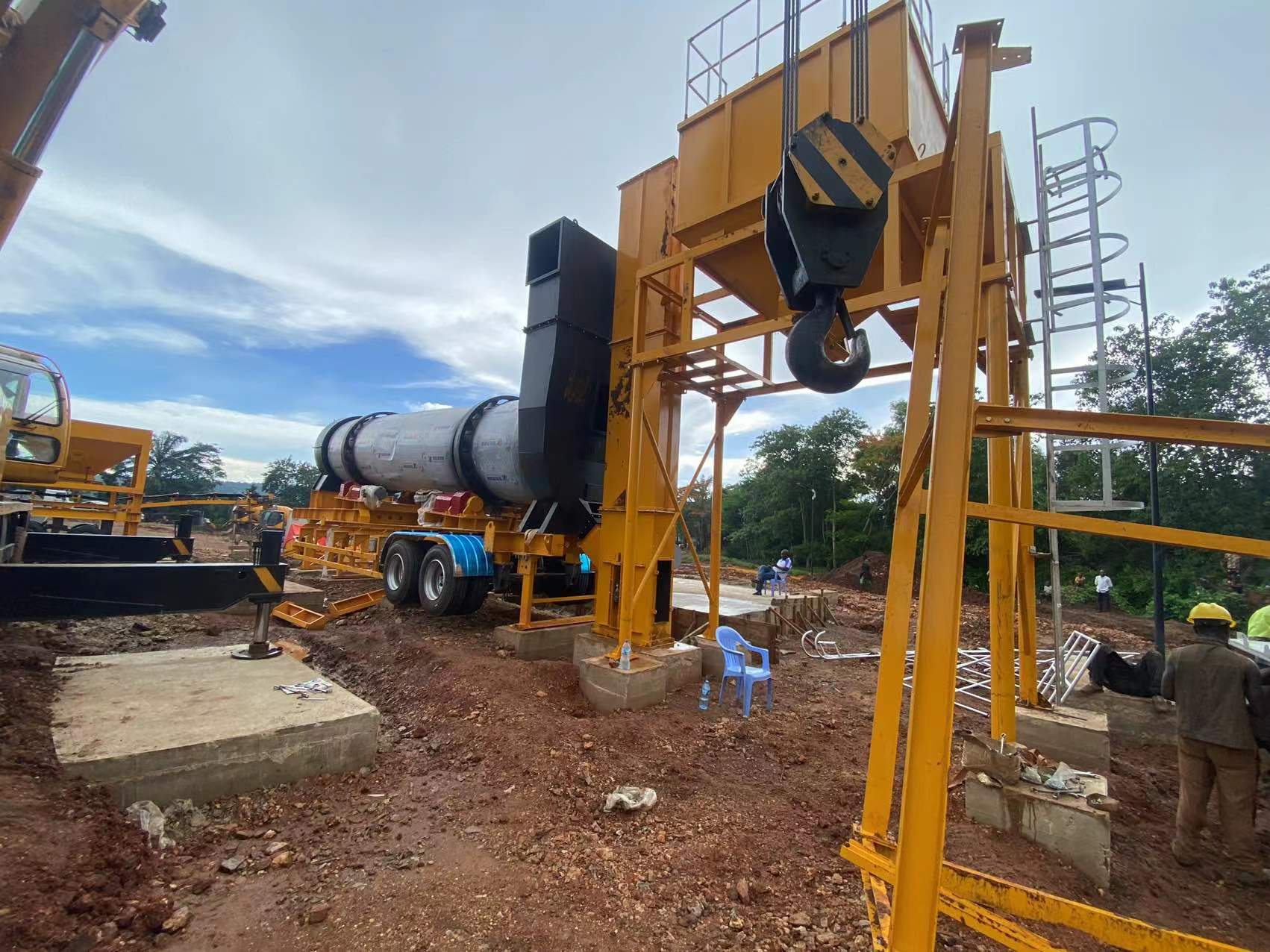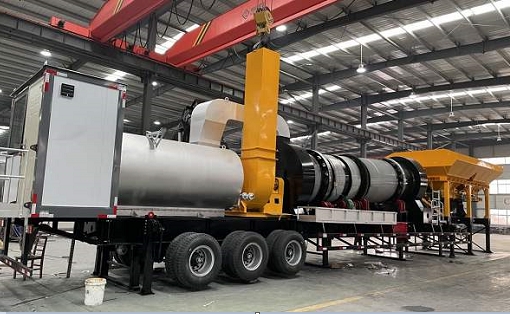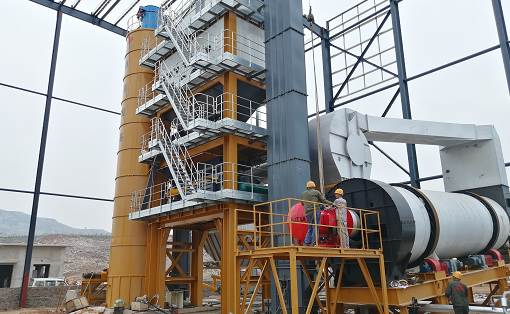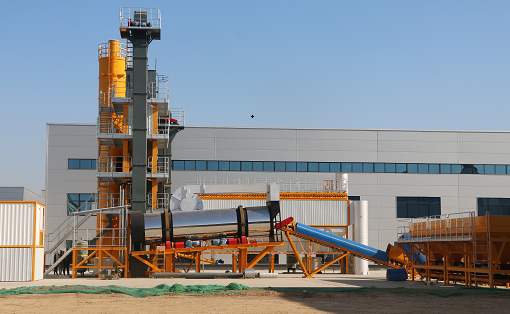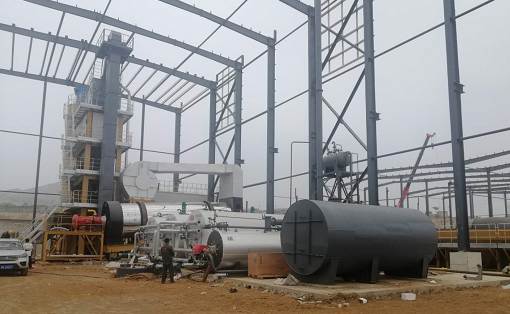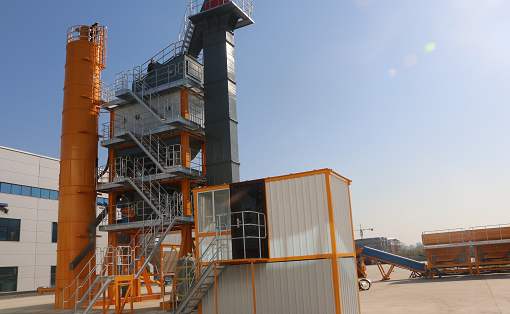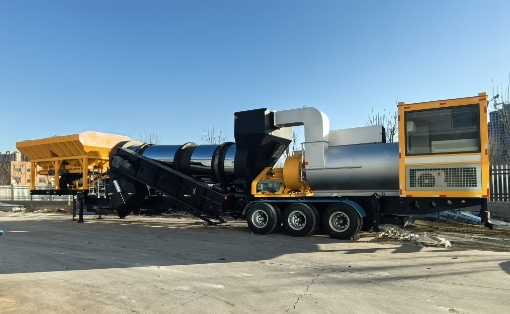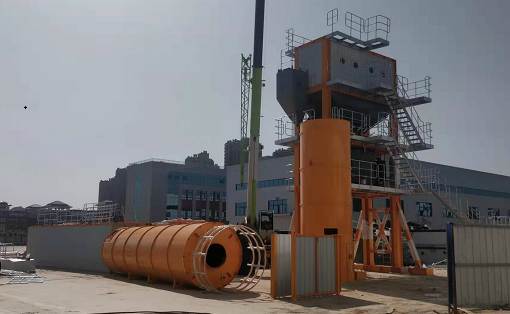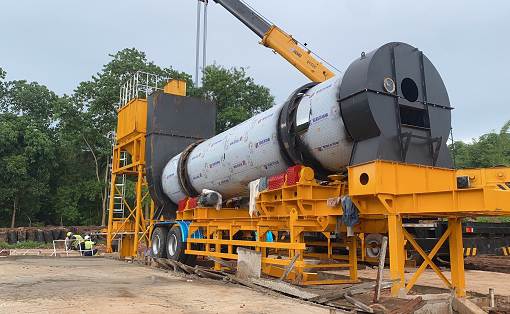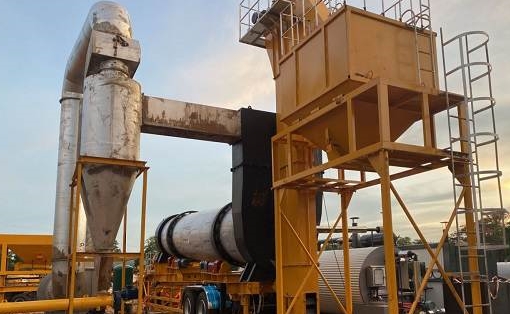Asphalt concrete mixing plants silo phenomenon and solutions
[1]. Composition of intermittent asphalt mixing plant
The intermittent asphalt mixing plant mainly consists of cold material silo, cold material distribution system, cold material conveying system, combustion and drying system, ventilation and dust removal system, hot material elevator, vibrating screen, hot material silo, powder conveying system and asphalt conveying system. System, metering system, mixing cylinder, control system, finished material transportation and storage system, asphalt heating and insulation system, etc.
2. Discussing the phenomenon of warehouse cascading in asphalt concrete mixing plants
2.1 First, let’s introduce the structure and principle of vibrating screen. The main components include: RetentionRubber, SupportTube, vibrating screen drive system and supporting electrical components
The working principle is introduced as follows: hot aggregate is sent to the vibrating screen through the hot aggregate elevator, and the hot aggregate is vibrated and screened by the vibrating screen. Stones of different specifications enter their corresponding hot aggregate bins through the screen and cannot pass through the geotechnical work. The super-sized particles from the cloth screen enter the overflow bin and are sent out.
[1]. Composition of intermittent asphalt mixing plant
The intermittent asphalt mixing plant mainly consists of cold material silo, cold material distribution system, cold material conveying system, combustion and drying system, ventilation and dust removal system, hot material elevator, vibrating screen, hot material silo, powder conveying system and asphalt conveying system. System, metering system, mixing cylinder, control system, finished material transportation and storage system, asphalt heating and insulation system, etc.
[2]. Discussing the phenomenon of warehouse cascading in asphalt concrete mixing plants
2.1 First, let’s introduce the structure and principle of vibrating screen. The main components include: RetentionRubber, SupportTube, vibrating screen drive system and supporting electrical components
The working principle is introduced as follows: hot aggregate is sent to the vibrating screen through the hot aggregate elevator, and the hot aggregate is vibrated and screened by the vibrating screen. Stones of different specifications enter their corresponding hot aggregate bins through the screen and cannot pass through the geotechnical work. The super-sized particles from the cloth screen enter the overflow bin and are sent out.
2.2 Briefly introduce the structure and principle of the hot silo
The main components include: SampleChute, HotStoneBinDoorOperatingCylinders, as well as the opening and closing doors of each hot silo, the material level devices of each silo, and supporting pneumatic components and electrical components.
The working principle is introduced as follows: The hot aggregate bin stores qualified hot aggregates in categories and converts them into weights according to the ratio set by the grading. Through system control, the hot aggregate bin door is continuously opened and closed after rough and fine grading to enter the hot aggregate bin. The aggregate reaches the appropriate quality, stops batching, enters the mixing pot, and starts batching for the next pot, and the cycle continues from then on.
2.3 Introduction to the causes and treatment methods of silos in asphalt concrete mixer plants, mainly including the following aspects:
2.3.1 The phenomenon of silo cascading is caused by the leakage of the partitions between the hot silos. Each hot silo is separated by iron plates. The iron plates have a certain period of use and have certain wear resistance. After long-term friction with stones, the thickness of the iron plates gradually becomes thinner, just like dripping water wears through stone, resulting in If the iron plate is worn through, the more stones between adjacent hot silos will enter the smaller hot silo from the leakage point, resulting in a string of silos.
2.3.2 The broken sieves of different specifications cause the phenomenon of silos between various stones. Various screens are made of steel bars of different diameters. Their qualities are different, and their toughness, stiffness, and wear resistance will be different. After a certain period of use, the steel bars of the screen gradually become thinner, and when they are broken, the screen holes As the diameter increases, large stones that could not pass through the sieve hole in the past will enter through the place where the diameter of the sieve hole becomes larger and mix with the stones that were previously screened by the sieve without changing the diameter, resulting in a silo phenomenon. The solution is to re-weld the damaged areas with wear-resistant steel plates.
2.3.3 The silo phenomenon caused by the poor blocking effect of the front and rear baffles of each layer of screens. If the gap between the front and rear baffles and the side isolation plates of the vibrating screen is too large, stones exceeding the size of the screen in contact with the baffles will leak into the corresponding hot material bin. As a result, the phenomenon of cross positions occurs. The solution is to improve the blocking effect of the front and rear baffles and fill in all gaps.
2.3.4 Due to the poor tension of each screen mesh and the tight contact with the sides, gaps will appear between the screen mesh and the sides when the vibrating screen vibrates, resulting in the phenomenon of silos. The isolation contact plates of each layer of the vibrating screen are arranged in a certain arc from top to bottom. Therefore, if the screen wants to be in close contact with it, the tension must reach a certain level to ensure that the screen will not have gaps with the sides when the vibrating screen vibrates, otherwise the phenomenon of siloing will occur. The solution is to adjust the tension of each screen to an appropriate degree. Generally, the tension spring is tightened to half of the original length. It can be adjusted appropriately according to the length and toughness of the screen.
2.3.5 The overflow pipe connecting the vibrating screen and the overflow bin is blocked, causing the phenomenon of silo cascading. When the overflow pipe connecting the vibrating screen and the overflow bin is clogged, the various overflowing stones will not enter the overflow bin through the overflow pipe and be discharged. When more and more overflows occur, the hot material from the overflow will be blocked. warehouse, excess overflow material will enter the adjacent hot material silo without overflow or dissatisfaction, resulting in the phenomenon of silo cascading. The solution is to remove the blockage in the overflow pipe and clear the overflow pipe so that the overflow can enter the overflow bin and be discharged smoothly.
[3]. Quality control of asphalt concrete
The quality of asphalt concrete is mainly reflected in two indicators: stability and flow value. It reflects the high temperature stability and deformation resistance of asphalt concrete and is closely related to the quality of raw materials and the control of the production process. Therefore, controlling the quality of the mixture should start from the following aspects.
3.1 Control of raw material quality
The raw materials of asphalt concrete mainly include: coarse aggregate, fine aggregate, mineral powder, asphalt, etc.
3.1.1 Coarse aggregate Coarse aggregate refers to gravel with a particle size greater than 2.36mm. Creates a frame in asphalt concrete for stability. Therefore its mechanical properties should meet the requirements and have a good shape. The needles have low flake content, no weathering, no impurities, and a rough surface with high internal friction.
3.1.2 Fine aggregate Fine aggregate refers to large sand, stone chips, etc. with a particle size between 0.075 and 2.36. It should be clean, weather-free, and free of impurities in appearance, with appropriate particle composition and possible edges and corners to increase inter-particle interlocking and reduce inter-aggregate pores.
3.1.3 Asphalt Before use, the penetration, ductility, softening point and other indicators should be checked to see if they meet the technical requirements for transportation petroleum asphalt. When selecting and using asphalt, the high-temperature stability and low-temperature crack resistance of asphalt pavement must be taken into consideration. Since the higher the grade of asphalt, the greater the penetration and the lower the consistency. Therefore, different types of asphalt must be selected according to the different pavement layers. The surface layer uses thinner asphalt to improve the crack resistance of the surface layer; the middle and lower layers use Thicker asphalt for improved rutting resistance. The wax content should be controlled below 3%. If the wax content is too high, it will affect the high-temperature stability and low-temperature crack resistance of the pavement, and will also affect the adhesion of asphalt.
3.1.4 Filler The function of filler is to form asphalt mortar with asphalt to increase the bonding force of asphalt mixture. The correctness of filler preparation is directly related to the free asphalt in the asphalt mixture. If free asphalt exists, it will reduce the adhesion of the asphalt to the asphalt mixture and cause oil flooding. The filler should meet the fineness requirements and be free of impurities. When using bagged mineral powder, there must be a storage area that is rain-proof, moisture-proof, ventilated and dry to prevent the mineral powder from getting wet and rainy. Mineral powder that has become agglomerated and damp must not be used. Sometimes in order to improve the adhesion of asphalt, additives such as slaked lime need to be added. The slaked lime must be completely digested and the fineness must meet the requirements. Otherwise, it will have the opposite effect and affect the quality of the asphalt mixture.
3.2 Control of primary distribution of cold material
The primary mixing of cold materials is to calculate the speed of the batching motor of each cold material bin and the height of the material door according to the requirements of the mix ratio, so as to determine the transportation volume of various materials and meet the needs of continuous production of the mixing station. If the primary mix of cold materials is not accurate, there will be material waiting and material overflow, which will affect the productivity of the mixing station and the quality of the mixture. Test personnel should keep abreast of the feeding situation of the material yard at any time, take samples and screen them in time, and analyze relevant data. The primary mix is ??adjusted according to different raw materials to ensure the stability and continuity of mixing production.
3.3 Weighing and measurement control
The heated and dried aggregates are screened by a vibrating screen and then enter hot material silos with different particle sizes. Testers must sample and screen the aggregates screened by the vibrating screen to determine the proportion of materials with different particle sizes in each hot silo. Hot material bin screening must be carried out when the primary mix of cold material is stable to ensure the accuracy of the screening test. The production mix ratio gradation curve obtained through screening test analysis should be within the allowable range of the target mix ratio gradation curve and comply with technical standards.
3.4 Temperature control
For intermittent asphalt mixing stations, the asphalt heating temperature is controlled at 150 to 170 degrees, the aggregate temperature is 10 to 20 degrees higher than the asphalt temperature, and the factory temperature of the mixture is 140 to 165 degrees. If the temperature is not enough, flowers will appear; if the temperature is too high, the asphalt will burn. The factory temperature of asphalt mixture directly affects the quality of paving and rolling. During the production process, the temperature of the mixture should be monitored at any time and the operator should be notified so that adjustments can be made according to the actual situation.
3.5 Mixing of mixture
After the mixture is evenly mixed, all mineral particles are required to be wrapped by asphalt, without uneven wrapping, whitening, agglomeration or segregation. Usually the mixing time of asphalt mixture is 5 seconds for dry mixing and 45 seconds for wet mixing. SMA mixture requires dry mixing for 5 seconds and wet mixing for no less than 60 seconds. Mixing time cannot be reduced arbitrarily in order to improve productivity. The mixing blades and lining plates in the mixing tank should be replaced in time after wear and tear to ensure the orderly flow and uniform mixing of the mixture in the mixing tank and improve the mixing quality of the mixture.
3.6 Monitoring of finished materials
Quality inspection personnel must inspect each batch of finished materials, and materials that are flowery, segregated, or have insufficient or over-temperature temperatures must be discarded. Any problems found will be reported back to the operator in a timely manner so that targeted adjustments can be made. The test personnel conduct random inspections of the mixture every day, conduct experimental analysis according to the test procedures, and feedback the experimental data to the operators, so that problems found can be analyzed and solved in a timely manner.


